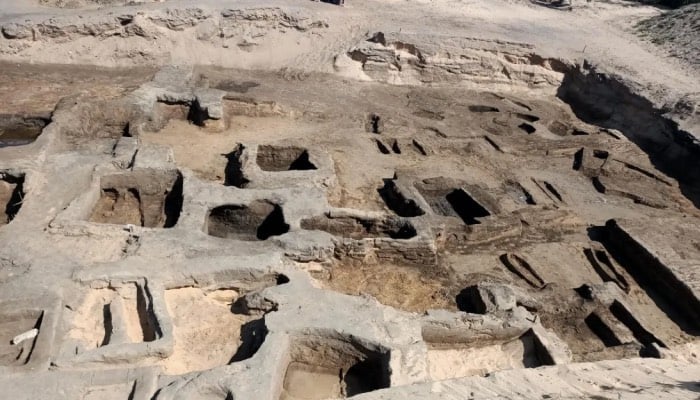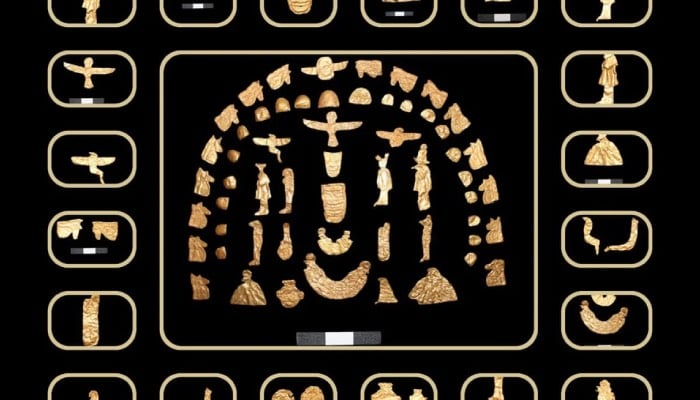
An excavation in Damietta, Egypt, has revealed 63 tombs dating back over 2,500 years, along with a wealth of gold artifacts, coins, and pottery.
The discovery, announced by Egypt’s Ministry of Tourism and Antiquities on July 23, provide new insight into ancient Egyptian civilization and the coastal city’s role in historical trade.
As per CNN, the tombs, dating to the 26th Dynasty (664-525 BC), contained funerary amulets and ushabti statues meant to protect and accompany the dead in the afterlife.
Additionally, the site yielded 38 bronze coins from the Ptolemaic era (323-30 BC), found in a ceramic vase.

Known as Tal al-Deir, the site served as a necropolis, an elaborate ancient cemetery, and was significant during the 26th Dynasty. It continued to be used during the Roman and Byzantine periods.
Salima Ikram, a professor of Egyptology at the American University in Cairo, noted that the artifacts indicate a wealthy necropolis with significant social stratification.
A large tomb for individuals of high social status was also found, containing gold foil figures of religious symbols and idols.
Previous discoveries:
The ongoing excavation has previously uncovered significant finds. In 2019, seven gold coins from the Byzantine period and ushabti statues bearing the name of King Psamtik II were discovered.
In 2022, 20 tombs containing gold foil figures of Egyptian deities such as Bastet and Horus were found.















